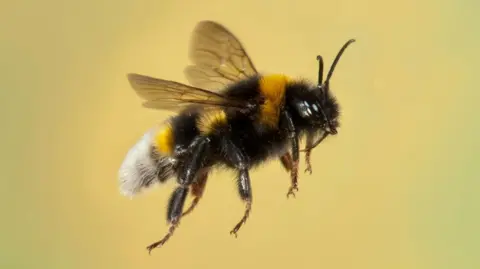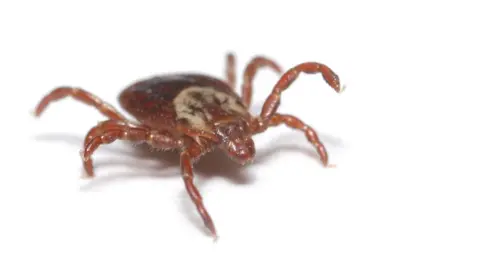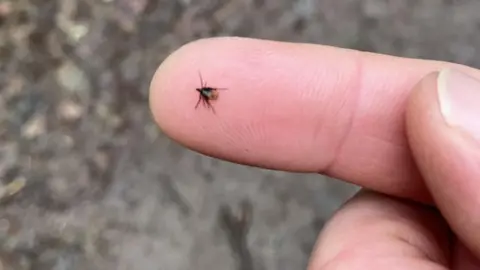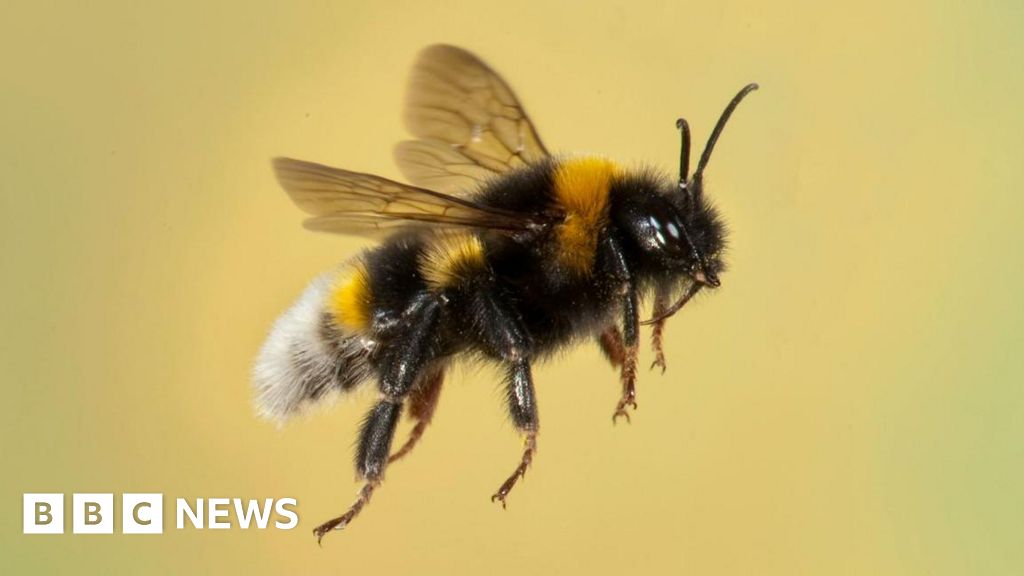 Getty Images
Getty ImagesBumblebees have been found to be starting nests in the depths of winter due to climate change, say conservationists.
The charity Buglife said active worker bumblebees, which do most of the work in a nest, were spotted in Aberdeen during mild weather over the Christmas break.
It said a previous survey had recorded bumblebees and honeybees between Christmas and New Year at locations across the UK, including the Highlands.
Buglife said the nests were at a “high risk” of failing because of the shortage of flowers for the bees to collect nectar and pollen from, and the risk of a return to colder weather.
Scientists have previously said climate change had caused a widespread loss of bumblebees across the world.
The insects, an important pollinator, normally hibernate through winter into spring.
The Christmas period was unseasonably mild, but since then there have been days of cold and snowy weather.
Buglife said at least two of the UK’s 25 species of bumblebee were believed to have started nest-building early.
The charity’s Paul Hetherington said: “In 2019 Buglife ran a bee survey over the Christmas to New Year break and were amazed at the results with honeybees and bumblebees found from Jersey through to Thurso.
“This year one of my colleagues based in Aberdeen spotted active worker bumblebees over the Christmas break.
“The fact that there are active workers means not only have the queens awakened from hibernation but they have gone to the extent of starting new nests.”
Mr Hetherington said a lack of flowers and wintry weather left the nests at risk of collapse and could kill the bees.
He added: “If this happens there will be no new queens produced meaning far fewer to emerge in spring further feeding the known decline in bumblebees.”
 Getty Images
Getty ImagesThe milder conditions also led to people encountering a far less welcome invertebrate – ticks.
The tiny parasitic spider-like creatures are usually active from early spring to late autumn.
Lyme disease, a bacterial infection which causes a range of health problems, can be spread to humans from some tick bites.
Inverness was among places the pests were found to be active, with one spotted in woodland in the city’s Ness Castle area on 28 December.

Over winter, adult ticks do not hibernate and instead shelter from low temperatures in long vegetation.
Mr Hetherington said: “This means that they are still potentially active and the period around 28 December was relatively warm for the time of year, a likely consequence of climate change is increased periods of tick activity in the same way that bumblebees have been spotted on the wing across Scotland this December.”
The charity Lyme Disease Action said it was concerning situation.
A spokeswoman said: “A widening of the period when ticks are active means there is a widening of the period when tick-borne diseases can be contracted.”




